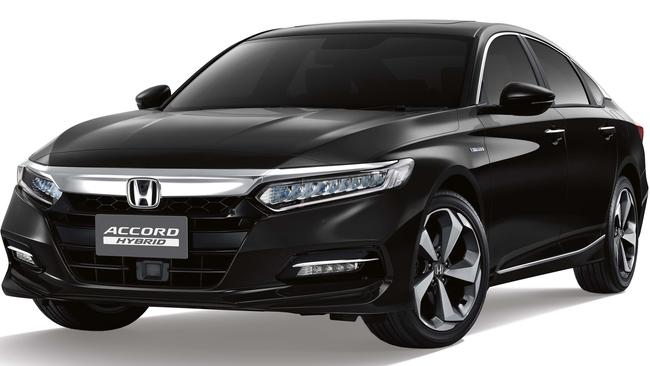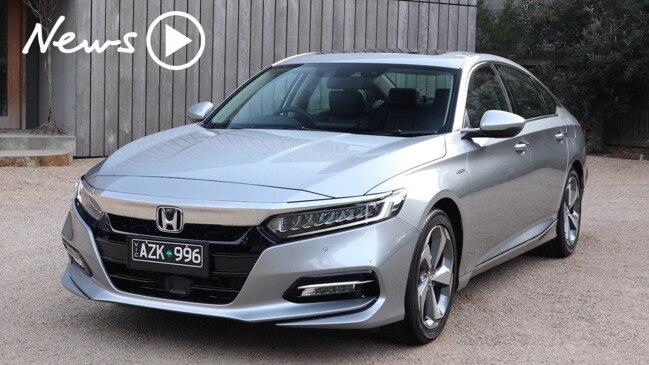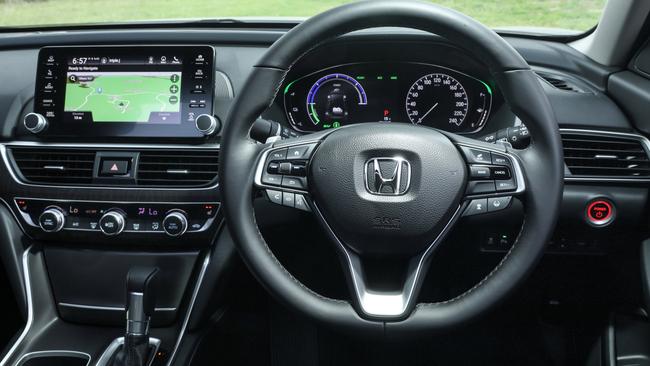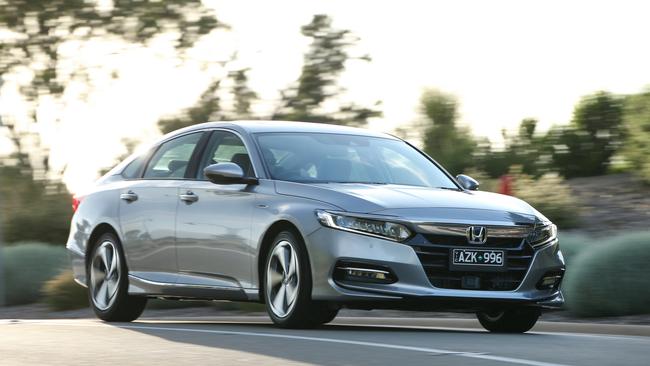Honda Accord review: Inside the box
Some brands seldom get this column’s undivided attention but it’s not always from a lack of love. Today’s subject is a case in point.

Some brands seldom get this column’s undivided attention but it’s not always from a lack of love. Today’s subject, Honda, is a case in point. It occupies a special place in my affection because the first press fleet vehicle I ever borrowed was a Honda S2000, a gorgeous rear-drive roadster with an absurdly high-revving four-cylinder engine. Flawless it wasn’t, and by today’s standards it wasn’t even that fast. But it was memorable, and it elevated “Japan’s BMW” in my estimation. A status confirmed shortly after by spells in the Integra Type R and original NSX supercar.
Then, more than a decade ago, when it had been smacked hard by the global financial crisis, Honda’s priorities changed and it began retreating from sportscars. It probably seemed like the right decision at the time. But the succession of dreary eco-boxes that ensued were like a cinema intermission from the silent era, all organ muzak and sticky carpets. Surely it was just a matter of time until the story resumed?

Well it has, in a fashion. After an elephantine gestation period, Honda’s US division engineered an NSX for the hybrid era that fetches Ferrari money. There’s also a Civic Type R, which has earned a seat at the hot-hatch high table. Its halo illuminates the planet’s third best-selling vehicle. Remarkably, Honda boasts two other top-10 finishers in the CR-V and HR-V.
However, it remains a small company in a time of mega-mergers and has yet to regain its former exalted status. It is hamstrung by legacy issues, such as the millions of Takata airbags under recall. Its CEO admits the range is too complex and production too expensive. Margins have plummeted.
So I’d been secretly hoping that the replacement Accord, the brand’s long-running flagship nameplate, would be a cracker. It looks the part, with a handsome exterior design that’s lower and wider than before. Despite being a little shorter, the wheelbase has been extended so that rear space is very generous and the boot gigantic – 570 litres, or about a quarter bigger.
In Australia there are just two variants: a 140kW turbo 1.5-litre or a hybrid with a 2.0-litre engine and two motors for 158kW. The hybrid costs $2500 more and marks Honda’s first offering with the technology since 2016. It’s a traditional self-charging unit with almost no ability to drive on battery power alone.

If these sound like modest units for a 4.9m long sedan weighing the wrong side of 1.5 tonnes, so it proves. Honda does not supply performance figures and I would have timed it myself, but didn’t have a sundial handy.
In either variant, the continuously variable transmission takes a while to respond to an urgent request; when it eventually does, it holds the revs steady and adjusts the ratios to achieve acceleration. It’s not the familiar rising and falling song of working up through the gears, but a continuous one-note wail. Horrible.
The Accord starts several thousand dollars above the most expensive Toyota Camry, and higher than pretty much any other rival you care to name, from Mazda to Skoda. Unsurprisingly, Honda expects demand to be modest – large sedans are a black hole in the market – but is persuaded that brand loyalists will want it. It’s possible, though, that potential customers will be confused about what the car is trying to be. From the outside it looks like a sporty grand tourer. Inside, the seats are set low, there’s a head-up display and paddle-shifters.

Some dynamic ingredients are also present – the steering is quick, for instance, and the chassis rapidly damps down the effects of a bump. But a long sedan with driven front wheels has little inherent dynamic merit, and the driveline cannot deliver on this promise. On country roads the suspension absorbs initial hits well enough but does not inspire confidence that it will track true through a corner or change direction with alacrity.
It looks like it should be plush and effortless, with a sporty edge, but the ride quality is fidgety and you’re aware the driveline has to work hard. Aside from the seats, there’s not enough to delight in the cabin either. It’s not as quiet as expected and hard plastics abound; the switchgear feels generic (some of it poorly located) and the control screen is small. If you had doubts that margins were tight, there’s evidence in the glovebox – or rather its lid, which is damped in the hybrid but simply drops open in the base model. Congrats, Honda, you saved a few cents.
But you lost me after you deleted the S2000 and although I dearly wanted to like the Accord, it will take more than this to get me back. It’s confused and overpriced.
Honda Accord
Engine:1.5-litre turbocharged four-cylinder petrol (140kW/260Nm) or 2.0-litre four-cylinder petrol plus two electric motors (158kW/315Nm). Average fuel 6.5/4.3 litres per 100km
Transmission: Continuously variable, front-wheel drive
Price: From $47,990
★★½
Note: Honda has told me the glovebox lids in the petrol models are damped as well. It says the vehicle I was in had the dampener disconnected. Honda’s technical team had removed it while performing some checks in behind the dash and forgot to reconnect it afterwards.


